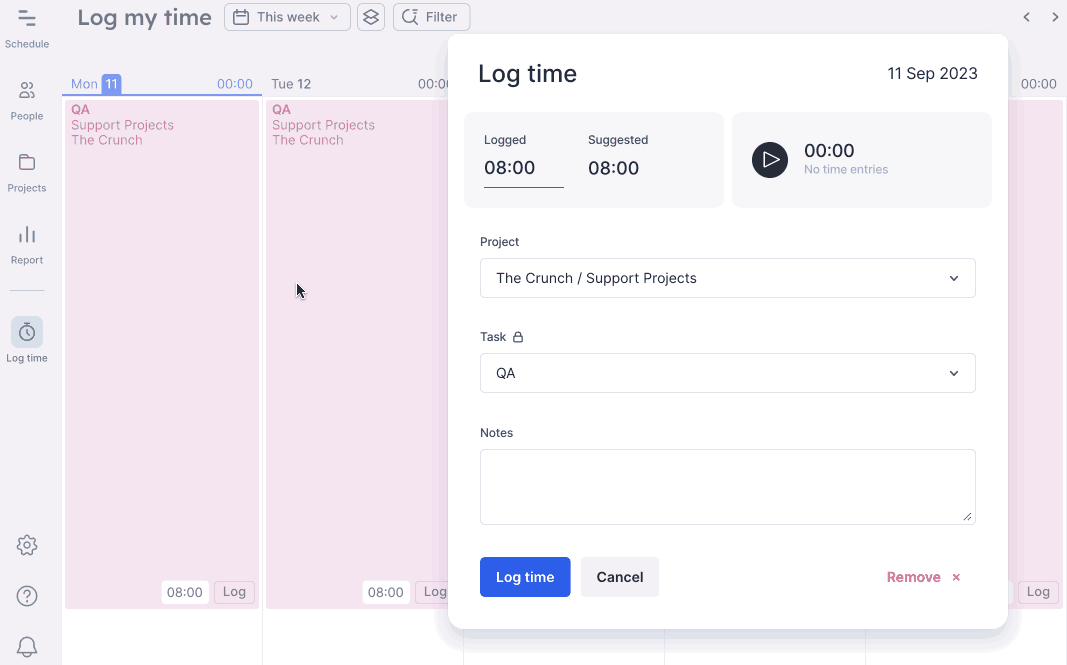“I’ve been through the wringer”: STORM+SHELTER replaces Asana and Everhour with Float
STORM+SHELTER is a video and animation production company based in Cardiff, Wales. For almost ten years, their team of 13 has crafted head-turning commercials, films, and content for companies like Amazon, artists like Little Mix, and institutions like Cardiff University.
At any given time, the team handles 25 to 30 projects with clients spanning different industries and with quite different requirements. And, they rely on Float to know what needs to happen for every project, including due dates and team members working on it.
They couldn’t get a big-picture view of all their projects
Every project the STORM+SHELTER team takes on is unique. A typical day could include digging through Twitter mentions of a client to get ideas for a campaign or animating a series of social posts to light up a client’s feed. Or, it might be an intimate conversation with an artist in their home.
Because each task takes a different time per project, avoiding overservicing or underservicing clients came down to accurate time logging and capacity planning.
This meant Nick Patterson, the Co-CEO of STORM+SHELTER, and his team were always on the hunt for the right tools that could scale with them.

After using Slack, Google Calendar, and Trello in the early days, the team thought they had found the perfect duo when they switched to an Asana and Everhour combo to track time and manage projects.
But then, the cracks started to appear.
It was really difficult for us to get a big picture, look at how busy we were, who was being scheduled on what, especially if multiple tasks were going on in one day. The diary view in Asana couldn’t give us a good idea of what was happening.
STORM+SHELTER replaces two different tools with Float
The STORM+SHELTER team found Float while looking for scheduling management systems and then started using it along with Asana and Everhour.
They couldn’t let go of Asana just yet because they relied on it to log their team’s time.
“We realized over time that we looked into Float to see what we had to do and went into Asana to just press start tracking every hour.”
But using the trio of tools complicated their work instead of making it easier.
“We really liked the way Float looked and worked, but working alongside Asana was just a duplication of effort because they wouldn't speak to one another properly. If I scheduled someone for that project on Tuesday, it wouldn't change in Asana to show this person was working on Tuesday. I had to do that twice. So we had to ask: what do we prefer? What's actually making more sense for how we run things and how we schedule stuff?”
While the team was asking these questions, Float rolled out a new feature: an in-app timer that let them log time as they worked.
It was an easy choice. The team decided to sunset Asana and Everhour and stick to just Float for both capacity planning and time tracking.
“If a timer is coming into Float, then actually, we don't need Asana because no one was really using it to look at what they were doing that day.”

Less time spent in tools, more time getting work done
STORM+SHELTER’s move to Float put a plug in major time sucks.
Scheduling is now simpler, allowing the team to spend less time in Float and stay more focused on the creative aspects of their client projects. The team can see projects lined up for weeks ahead, determine who can take on work, and then simply drag and drop tasks.
“The team has got a lot more of a clear understanding of what's going on, where, and when. We wouldn't have really had that if we were still using Asana for our schedule management stuff.”
Float has become the single source of truth for task and schedule information. All team members know where to go when they need to find information, which saves them the precious time they were previously spending trying to track down information and chasing documents.
As a result, Nick spends less time answering questions and more time managing projects and clients.

Float makes me feel a lot more confident in not being as involved in the projects as my role evolves. I feel more reassured that what needs to happen is clear enough for people instead of thinking they’d be digging through lots of different messages to try and figure out what they need to do on any given day.
After constantly switching from different tools, Nick is glad to have found one that works.
I've been through the wringer with so many different project scheduling and team management apps, and now the dust is settling a bit, which is refreshing!

